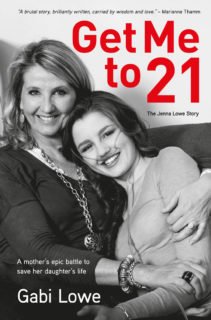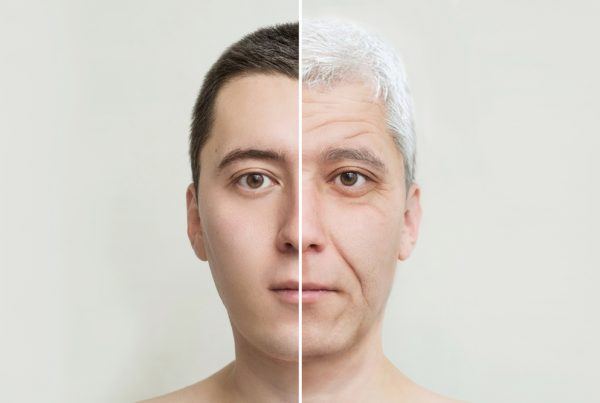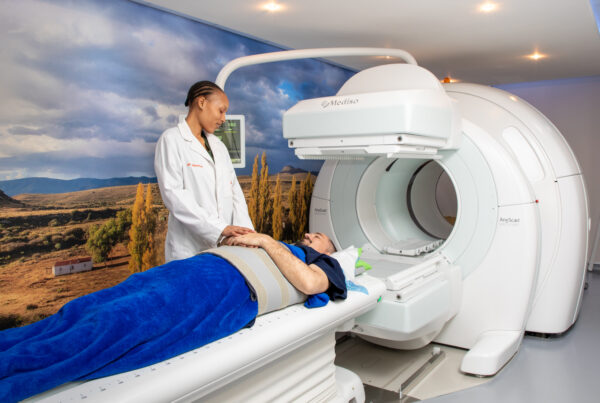Jenna Lowe was young, bright, beautiful and articulate when she was diagnosed with a rare disease. Pulmonary hypertension was a devastating diagnosis that ultimately took her life. Her equally extraordinary mother has written Get Me To 21. In this book Gabi Lowe shares life lessons of this profound journey and how the consequences of this rare disease taught them to live with an open heart.
Q: Gabi, when you think back on everything you’ve been through, what is the first thing that comes to your mind?
A: Actually, I didn’t think I would survive Jenna’s death. Jen and I were so inextricably linked. I was fighting so hard for her to live. I suppose the biggest learning has been around how to live with that kind of loss. I thought I would join her or, at the very best, be simply a ghost of myself. My fear of her death was so huge that it would take me down. What I found was that, at first, it did. I was completely broken. I was a ghost of my former self.
But never once did I not want to live. And what became even more extraordinary is that, actually, I wanted to live more strongly as time moved on. Her courage gave me the courage to fully embrace living with an open heart.
Q: You talk about Jen’s open heart, and it’s amazing that a teenager could be so wise.
A: Yes, her qualities were very rare for anyone, and probably more so being a teenager. She always had this innate inner peace, wisdom, and serenity about her. Many people have told me they don’t think they have the courage to read the book.
Q: I think I’m one of those.
A: And my answer is, you have to find the courage to read the book. Because you must find the courage to live in this world. And this world is imperfect. But we need to learn how to live with the pain, because with deep pain also comes deep joy. If you’re going to live with an open heart, you need to accept it all. So, in our fight, she taught me how to fight. We learned how to make each day matter, and that was an incredible thing. Her legacy is greater than what she has done for pulmonary hypertension or organ donation.
It’s vitally important, learning the lessons of how to live in the face of adversity and how to stay engaged even in the face of death; that I still want to be in this world; that I choose life, regardless. That was something I didn’t think I would learn. But I did.

Q: You didn’t fall apart, but you have changed.
A: I learned so many lessons through Jen. When you read the book, you’ll imbibe them. All the themes are there. I simply told the story as it was and is, with brutal honesty. Then, two or three years after her death, I co-authored a model with friend and colleague Pippa Shaper called Ten Rs of Authentic Resilience. It’s about realistic optimism – learning to sit in the fire and really feel the emotion. Many of us are terrified of emotional pain. It doesn’t kill you, but running from it just might, because of what it does to your body: the stress, the impact on your body if you don’t allow your body to grieve and to feel. So many of us are numbing the pain so much that we end up numbing the joy.
Giving and Receiving Are Linked
Part of the lesson that Jen taught me was her stoicism and incredible courage in the last 187 days in ICU. She still had grace and courage. She still fought, and she still had gratitude. But there are also so many other lessons. Having to lean on our community was humbling and a huge lesson for me. That wasn’t easy. Asking for help is one of the most difficult things. We think we don’t need the help. This is where we go wrong because we live in a community. We don’t come into this world on our own. We live in a community and we’re supposed to live in a community. This is where connection lies, purpose lies, where intimacy lies. Those are the things that matter. Our family – myself, my husband Stuart and my daughter Kristi – learned through this experience of asking for help that giving and receiving are completely linked.
It’s a virtuous circle. In asking for help, we were able to reach out for Jen’s sake. In so doing, we started to change the landscape for pulmonary hypertension for other patients.
Q: Embracing and accepting your vulnerability is a key theme in your book and life.
A: Yes. Pippa and I teach, in our Authentic Resilience workshop, that you must embrace vulnerability to build courage. It’s vital. I’ve done a lot of work on integrating the loss since Jen’s death, both internally and externally. I’ve had therapy, been on silent retreats, EMDR trauma release, and meditation, among others. I also studied integral life coaching for 18 months, so I’m now a professional coach.
I think that being consciously aware, and being prepared to feel and allow grief, has been a really important part of healing. We don’t do ourselves any favors when we try to deny or hide things away in a box. You can’t hide for long. The box eventually bursts open.

Q: Tell me more about your current work and the model you’re teaching.
A: It’s a toolkit. It teaches us how to live more authentically. It’s an integrated model. So, for example, the first R is about Reality, checking in with reality and facing the harsh facts of whatever it is you’re facing. As humans, we quickly go into denial or drama, yet somewhere in the middle lies access to realistic optimism; that is the starting point to build a possible solution for any challenge: a work challenge, relationship dynamic or facing a rare disease.
We have a choice of how to respond to a rare disease
If you aren’t dealing with reality, you’re not going to get out of the starting blocks. How do you remain optimistic, yet face the most brutal facts and truths? The next R is called Reach-In and it’s about turning inwards, facing how you feel and how to deal with that. The third R is about Responsibility, which has everything to do with emotional IQ, about knowing you always have a choice of how to respond. You may not always be able to control an event, and, trust me, I tried with Jen. I tried everything to save her life, but I couldn’t control that. But we do have the choice of how to respond, even in the most heinous of circumstances. Jen taught me that. She could have become a victim. She never did.
There are 10 Rs in the model and we teach it in a full-day workshop. It’s having a profound impact on people.
Q: You’ve been the focus of most of the public attention by driving the campaign to help Jen get to 21, but how did your family cope?
A: The past years of extreme stress have been very hard on the family. What saved us during this time is that we were totally honest with each other. It wasn’t only about being allowed to speak out, but also about being heard without judgment. And about sitting with the discomfort, of not always being in the same emotional space at the same time. We got help through therapy to accept that our grieving was different. I found that therapy is vital in such a complex situation. I’ve found some joy in life again. I love what I do, and that has given me purpose and meaning.
What has been your greatest gift from this tragic journey with a rare disease?
It’s about learning to live with an open heart, regardless of the challenges and adversity that come my way. I’ve learned about impermanence, that we are all going to die. It’s horrific to lose a child, to watch your daughter die, no matter how hard you tried to keep her alive.
Death has become part of my life. I’ve found myself speaking about it differently. I’m no longer afraid of it. You need to have the conversation about having a good death. We talk about life all the time; what about talking about death? It’s the one thing we know for sure… that at some point we will all die. A part of me feels we need to make friends with this.
Having said that, I still feel Jen all around me. I feel that I still have a relationship with Jen. I don’t know how scientific that is, but her presence in my life is real to me.
Is there anything you could have done differently?
No. I would have done nothing differently. I just have to reiterate that even if you are facing the death of a loved one, you must do whatever you can to keep your heart open. Have those conversations, no matter how hard they are. This is what I do now. My life’s work is about helping others to prepare for all kinds of different adversities, challenges, and realities while making every day count and learning to value the present. I would love everyone to read the book. Not because I wrote it, but because I want them to be touched by Jen the way I was touched by her. You need to “meet” her to know how extraordinary she was and is. So powerful and yet so gentle, with so much to teach us all.
I’ve had so many beautiful messages from people saying the book has influenced them profoundly, and I’m so grateful for that.
Writing about Jenna’s Journey
Gabi Lowe’s book is available through the The Jenna Lowe Trust – 10% will automatically go to the trust to continue Jenna’s work for other patients. You can also find it at www.TakeALot.com, Kindle.com or Amazon.com.
Longevity Book Club Review
In Get Me to 21, Gabi presents her daughter with the ultimate gift of love – a beautiful memoir of the young woman whose life and death had gripped the hearts of our nation. More than that, it serves to continue Jenna’s legacy in raising awareness for pulmonary hypertension (PH), as well as the need for more organ donors in South Africa.
The reader is granted access to the family’s battle to save Jenna from the debilitating rare disease. Gabi also generously shares with the reader Jenna’s personal diary entries, pieces of poetry and writing.
You will be drawn into the story. You’ll root for Jenna and her family’s fight for survival. You will laugh along at the funny moments. And finally, you will cry – a lot – because of the very real heartbreak and trauma that is part of this true story. And with each breakthrough and setback, expect to be elated or distraught together with the family. Because, as the story continues, you will start to feel as if you had known Jenna personally.
In Jenna’s journal, following her diagnosis, she wrote: “I’m lucky if I have 10 years left. No long life for me. No career, no opportunity to change things or be promoted. I was always going to help people – be a politician, fix people’s lives. Something. How can I die?”
Gabi’s tireless work and book ensures Jenna will never die in our hearts. Her legacy lives on.
What is Pulmonary Hypertension?
According to the Pulmonary Hypertension Association “pulmonary hypertension (PH) is a complex and often misunderstood rare disease. The term PH means high blood pressure in the lungs. In “regular” hypertension (also known as high blood pressure or “systemic hypertension) the pressure in the arteries throughout the body is higher than it should be. This can be measured with a blood pressure cuff. In PH, blood vessels specifically in the lungs are affected. They can become stiff, damaged or narrow, and the right side of the heart must work harder to pump blood through.”
This Rare Disease Differs From Person To Person
- PH affects people of all ages, races and ethnic backgrounds. Although anyone can get PH, there are risk factors that make some people more likely to develop the disease.
- The symptoms of PH can be mistaken for other diseases. People who think they may have PH should get a diagnosis from a PH specialist.
- There is no cure for PH, but there are treatments that can manage PH and help patients feel better.
- Not all PH is the same. There are five different groups of PH based on different causes. Each form of PH is different. New research is being conducted every day with the potential to improve the outlook for people living with this rare disease.
If you enjoy reading and learning from truly brave real life stories like this one, then Dulcie’s account drowning in dementia is a must read.




![women [longevity live]](https://longevitylive.com/wp-content/uploads/2020/01/photo-of-women-walking-down-the-street-1116984-100x100.jpg)










